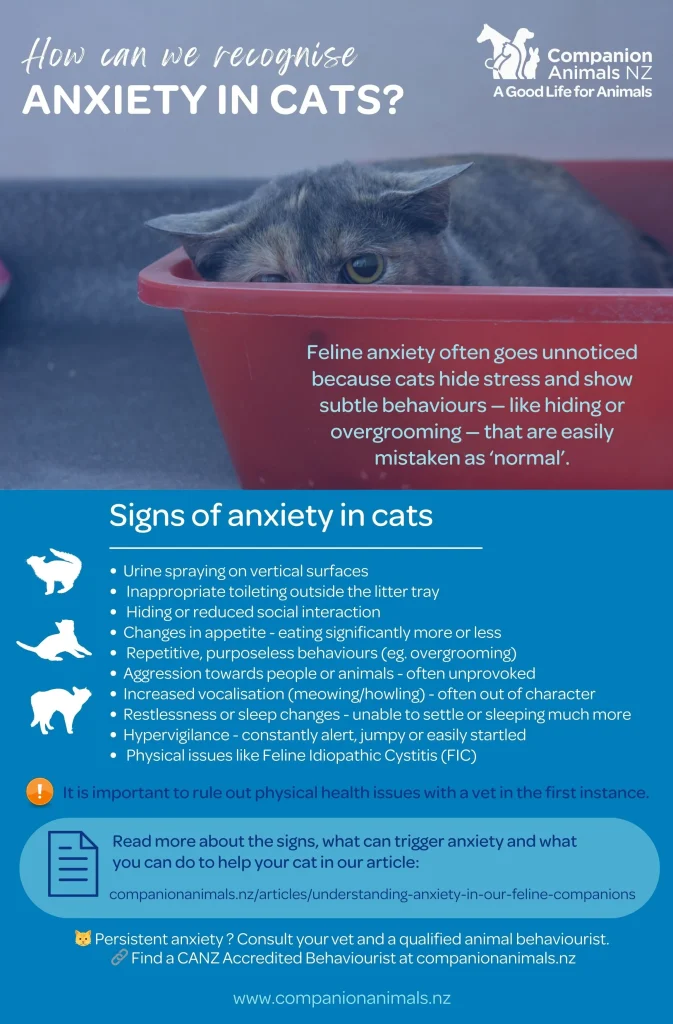Effective Techniques to Help Cats Adapt to Environmental Changes

Changes in a cat’s environment can be stressful, leading to behavioral issues such as anxiety or aggression. As a loving pet owner, it is crucial to understand how to support your feline friend during these transitions. In this guide, we will explore effective techniques that can ease your cat’s adjustment process.
Understanding Environmental Changes
Whether you are moving to a new home, introducing a new pet, or experiencing changes in your daily routine, cats can be sensitive to their surroundings. They are creatures of habit, and disruptions can lead to feelings of insecurity. Recognizing the signs of stress is the first step toward helping your cat. Common indicators of stress in cats can include excessive grooming, hiding, decreased appetite, or, conversely, increased aggression. By being aware of these signs, you can take proactive steps to help your beloved pet feel more comfortable.
Key Techniques to Help Your Cat Adapt
Here are some proven methods to consider:
- Maintain Routine: Cats thrive on predictability, so try to keep feeding and playtimes consistent. For example, if your cat is used to being fed at 7 AM and 7 PM, make sure to stick to this schedule as closely as possible. This small action can provide your cat with a necessary sense of normalcy amid change.
- Create Safe Spaces: Provide cozy hideaways in your home for your cat to retreat to if they feel overwhelmed. This could be a quiet corner of your room with a soft blanket or a specially designed cat cave. Cats often seek solitude when they are stressed, so having designated “safe zones” can greatly enhance their comfort level.
- Gradual Introductions: When introducing new pets or people, do it slowly to help your cat feel secure. For example, if you’re bringing home a new dog, you might start by allowing them to sniff each other’s belongings before a face-to-face meeting. Gradual exposure can help prevent your cat from feeling threatened.
Adapting to change doesn’t have to be a challenge for your feline family member. By implementing these strategies, you can create a more stable environment during transitions. Let’s delve deeper into each technique and discover how you can foster a smoother adaptation process for your beloved cat.

Implementing Additional Support
Beyond these core techniques, consider integrating calming products into your cat’s environment. Feline pheromone diffusers, for example, release synthetic versions of the soothing pheromones that cats naturally produce, helping to create a relaxed atmosphere. Additionally, engaging in interactive play with toys that mimic hunting experiences can provide both physical exercise and mental stimulation, further alleviating stress.
Lastly, don’t hesitate to consult your veterinarian for advice tailored to your specific situation. Every cat is unique, and understanding their individual needs will be key to helping them navigate life’s changes successfully.
CHECK OUT: Click here to explore more
Understanding Environmental Changes
The world can be a tumultuous place for our feline friends. From moving to a new home or welcoming a new family member, to experiencing changes in everyday routines, cats are often affected by shifts in their environment. Known for their keen sensitivity, cats thrive on familiarity. Sudden disruptions can incite anxiety, leading to problematic behaviors such as excessive hiding, destructive scratching, or even changes in eating habits. Being vigilant in recognizing these signs of stress can empower you to support your cat more effectively during transitional periods.
Effective Techniques for a Smoother Transition
To facilitate your cat’s adjustment to environmental changes, consider implementing the following effective techniques:
- Maintain Routine: Cats are creatures of habit, and maintaining their established routines is paramount during times of change. Stick to regular feeding times, play sessions, and bedtime rituals. For instance, if your cat has a midday playtime every day, keeping this unchanged fosters a sense of security as your cat navigates the new environment.
- Create Safe Spaces: Providing your cat with a designated refuge can be a game-changer. These safe spaces could be positioned high on shelves or tucked away in quiet corners. An inviting hideaway, perhaps a cozy blanket draped over a cardboard box, can offer your cat a familiar sanctuary where they can retreat and gather their bearings during moments of anxiety.
- Gradual Introductions: If you’re introducing new pets or family members, a gradual approach is essential. Allow your cat to acclimate to the new presence at their own pace. Start with scent introductions by exchanging bedding or toys before any face-to-face meetings occur. This method reduces the sense of threat and helps your cat feel more secure in their territory.
Transitioning after a big change doesn’t have to create overwhelming challenges for your cat. By incorporating these strategies into your daily interactions, you build a more stable environment that empowers your feline friend during uncertain times. But these techniques are just the beginning. Take a closer look at these suggested methods to see how they can further ease your cat’s stress and improve their overall well-being.
Implementing Additional Support
In addition to the above strategies, consider integrating specialized calming products tailored for cats. Feline pheromone diffusers can significantly influence your cat’s emotional state by mimicking natural pheromones, which create a soothing environment, thereby promoting relaxation. Interactive play sessions using stimulating toys can also provide not only physical exercise but also rich mental engagement, further alleviating feelings of stress as your cat adjusts to their new circumstances.
Understanding that each cat has unique needs is crucial. Consulting your veterinarian can also provide insights personalized to your cat’s specific situation, ensuring that you are doing your best to support them through life’s transitions.
| Technique | Details |
|---|---|
| Gradual Introduction | Introducing changes slowly can reduce stress and anxiety in cats. Familiarization with new surroundings allows them to explore at their own pace. |
| Create Safe Spaces | Making cozy areas with familiar bedding and scents provides a retreat where cats can feel secure during transitions. |
| Positive Reinforcement | Rewards during times of stress, such as treats or praise, can build positive associations with new environments. |
| Routine Establishment | Maintaining a consistent feeding and playtime routine can provide stability and comfort for cats amidst environmental changes. |
Engaging in these effective techniques not only helps cats navigate through transitions but also fosters a sense of empowerment as they adjust to new experiences. Each method is designed to resonate with a cat’s natural instincts, promoting emotional well-being and a smoother adaptation process. Understanding the psychological nuances of our feline friends is crucial; after all, a stable environment is essential for their happiness. Emphasizing the importance of these strategies might inspire pet owners to take proactive steps, ensuring their cats feel at home no matter the circumstances.
SEE ALSO: Click here to read another article
Creating a Positive Environment
Alongside practical strategies, cultivating a positive environment plays a critical role in helping your cat adjust to changes. This environment should be enriched with opportunities for exploration and mental stimulation. Consider the following methods to build a cat-friendly atmosphere:
- Environmental Enrichment: Introducing various forms of enrichment can make a significant difference in your cat’s ability to cope with new surroundings. Utilize cat trees, tunnels, or perches that allow your cat to engage in natural behaviors like climbing and observing their environment. These additions not only divert their attention from stressors but also promote physical activity and mental engagement.
- Interactive Feeders and Puzzle Toys: Feeding your cat using interactive feeders or puzzle toys can transform mealtime into an engaging activity that challenges their problem-solving skills. This approach can distract them from anxiety while encouraging natural foraging behaviors, giving them a sense of accomplishment and satisfaction.
- Calm Music and Aromatherapy: Calming music specifically designed for animals has gained popularity among pet owners. Studies indicate that classical music can create a soothing atmosphere for cats, helping them relax during stressful times. Additionally, utilizing cat-safe essential oils, such as lavender or chamomile, through a diffuser may enhance this calming effect, making the new environment feel more welcoming.
Staying Attuned to Your Cat’s Emotions
As you strive to help your cat adjust, it is essential to remain attuned to their emotional state. Cats are excellent at communicating their feelings through body language, vocalizations, and behavior. By observing these cues, you can better gauge how they are handling changes. For example, a cat that is excessively vocal may be expressing anxiety, while one hiding or displaying aggression might need more time to acclimatize.
Encourage positive interactions by paying attention to their preferences. Some cats may seek more attention during stressful times, while others might require consistency in their personal space. Tailoring your engagement to their needs can create a deeper bond and foster trust, empowering them to feel more secure in unfamiliar situations.
Consider Professional Guidance
In some cases, environmental changes can be profoundly disruptive to your cat’s well-being, warranting professional intervention. Animal behaviorists and trainers can provide tailored strategies to address your cat’s specific issues, helping them regain confidence and balance. These experts can guide you in implementing structured training sessions that reinforce positive patterns while redirecting undesirable behaviors.
Moreover, having a veterinary consultation is always a wise decision. Your vet can rule out any underlying health issues that might be exacerbated by stress. Furthermore, they may suggest specific dietary adjustments or calming supplements that could support your cat’s emotional health during transitions.
Adapting to change is a journey for both you and your feline friend. By establishing a supportive environment filled with enrichment and an understanding of their emotions, you can enhance your cat’s experience during life’s shifts, paving the way for a smoother transition and a healthier, happier companion.
CHECK OUT: Click here to explore more
Conclusion
In summary, assisting your feline companion in adapting to environmental changes necessitates a comprehensive approach that encompasses both emotional support and physical enrichment. By understanding the nuances of your cat’s behavior and ensuring a stable environment that fosters exploration, you can significantly alleviate the stress associated with transitions. Incorporating interactive toys and establishing a comforting setting with calming music or essential oils can contribute to a more peaceful adjustment period.
As you embark on this journey alongside your cat, pay close attention to their emotional cues, as they are key indicators of their comfort level. Recognizing when your pet is overwhelmed or fearful allows you to tailor your support effectively, reinforcing trust in your relationship. If challenges persist despite your efforts, seeking professional guidance can further bolster your strategy, providing expert insights and customized interventions.
The well-being of your cat is paramount, and by employing these effective techniques, you pave the way for a happier, healthier companion. Every cat is unique, and understanding their individual needs is essential for fostering resilience amidst change. As you implement these strategies, take the time to observe what works best for your furry friend, and remember that patience and consistency are crucial. Through this attentive approach, you will not only support your cat during times of change but also enhance your bond, enriching both your lives as you navigate the dynamics of adaptation.



